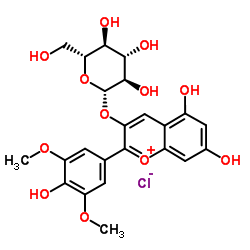Protective role of malvidin-3-glucoside on peroxynitrite-induced damage in endothelial cells by counteracting reactive species formation and apoptotic mitochondrial pathway.
Joana Paixão, Teresa C P Dinis, Leonor M Almeida
Index: Oxid. Med. Cell. Longev. 2012 , 428538, (2012)
Full Text: HTML
Abstract
The health-promoted benefits of anthocyanins, including vascular protective effects and antiatherogenic properties, have now been recognized, but the involved molecular mechanisms have not been well elucidated. Following our previous work on cytoprotective mechanisms of some anthocyanins against apoptosis triggered by peroxynitrite in endothelial cells, here we investigated the protective role of malvidin-3-glucoside, a major dietary anthocyanin, on such deleterious process, by exploring the interference on cellular reactive species formation and on apoptotic mitochondrial pathway. Preincubation of cells with 25 μM malvidin-3-glucoside protected efficiently endothelial cells from peroxynitrite-promoted apoptotic death, an effect which may be partially mediated by its ability to decrease the formation of reactive species after cell aggression, as assessed by the dichlorodihydrofluorescein diacetate assay and by carbonyl groups formation. Moreover, malvidin-3-glucoside inhibited mitochondrial apoptotic signaling pathways induced by peroxynitrite, by counteracting mitochondrial membrane depolarization, the activation of caspase-3 and -9, and the increase in the expression of the proapoptotic Bax protein. Altogether, our data expands our knowledge about the molecular mechanisms underlying the vascular protection afforded by malvidin-3-glucoside, and anthocyanins in general, in the context of prevention of endothelial dysfunction and atherosclerosis.
Related Compounds
| Structure | Name/CAS No. | Molecular Formula | Articles |
|---|---|---|---|
 |
Malvidin-3-O-glucoside chloride
CAS:7228-78-6 |
C23H25ClO12 |
|
The identification of degradation products and degradation p...
2013-12-01 [Food Chem. 141(3) , 3260-7, (2013)] |
|
Malvidin-3-glucoside protects endothelial cells up-regulatin...
2012-09-30 [Chem. Biol. Interact. 199(3) , 192-200, (2012)] |
|
Comprehensive colorimetric study of anthocyanic copigmentati...
2012-03-21 [J. Agric. Food Chem. 60(11) , 2896-905, (2012)] |
|
Induction of apoptosis and inhibition of invasion in human h...
2009-08-01 [Ann. N. Y. Acad. Sci. 1171 , 137-48, (2009)] |
|
Principal components of phenolics to characterize redVinho V...
2008-01-01 [Talanta 75(5) , 1190-202, (2008)] |